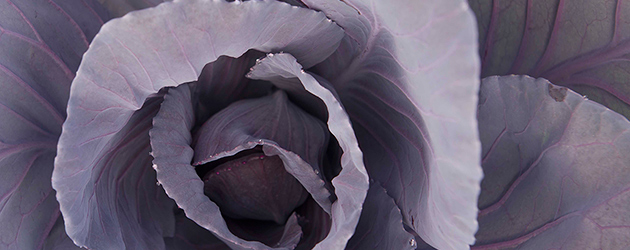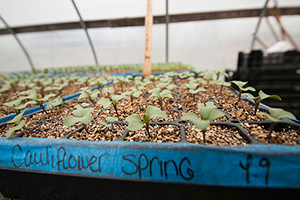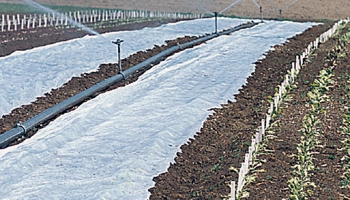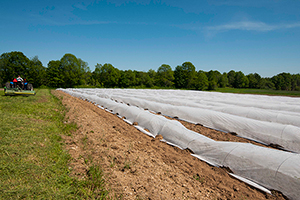- Artichokes
- Asparagus
- Baby Leaf
- Beans
- Beets
- Broccoli
- Brussels Sprouts
- Burdock
- Cabbage
- Carrots
- Cauliflower
- Celery & Celeriac
- Chicory
- Chinese Cabbage
- Collards
- Corn
- Cucumbers
- Eggplant
- Fennel
- Garlic
- Gourds
- Greens
- Horseradish
- Husk Cherry
- Kale
- Kalettes
- Kohlrabi
- Leeks
- Lettuce
- Melons
- Microgreens
- Mushrooms
- Okra
- Onions
- Parsnips
- Peas
- Peppers
- Potatoes
- Pumpkins
- Radishes
- Rutabagas
- Scorzonera & Salsify
- Shallots
- Shoots
- Spinach
- Sprouts
- Summer Squash
- Sweet Potatoes
- Swiss Chard
- Tomatillos
- Tomatoes
- Turnips
- Watermelons
- Winter Squash
Brassica Pests & Diseases
• A List of Common Pests & Diseases
• Basics of Prevention & Control
• Further Resources
Although there are many insect pests and diseases of brassicas (aka crucifers), most can be prevented from damaging the crops by adhering to a few basic guidelines. In general, a preventative management approach involves a combination of the following practices:
- Proper crop rotation
- Sourcing disease-free seed
- Transplanting seedlings versus direct-sowing
- Installing row covers as barriers
Other methods can also be employed, but the above four are fundamental to management of the most common problems listed below.
Common Insect Pests of Brassicas
Flea beetles
- Crucifer flea beetle ( Phyllotreta cruciferae )
- Striped flea beetle ( Phyllotreta striolata )
Cabbage "worms"
- Cabbage looper moth ( Trichoplusia ni )
- Imported cabbageworm ( Pieris rapae ); aka small white butterfly
- Diamondback moth ( Plutella xylostella ); aka DBM or cabbage moth
Aphids
- Several species target members of the Brassicaceae.
How can these pests be avoided?
Crop rotation. For growers/gardeners who practice proper (at least 3-year) crop rotations, insect pests of brassicas are less problematic.
Transplants. Seedlings of direct-seeded crops are more vulnerable to damage — get a head start against flea beetles and other pests by using transplants.
Weed control. To reduce potential feeding sites in the spring, control weeds, especially those in the brassica family, and distance any garden flowers you are growing that are in the same family.
Row covers. Installing floating row covers is time well spent for protection against all of these insect pests. Row covers must be placed and the edges immediately sealed with soil once the seed or transplants are in the ground, and repositioned carefully if removed for weeding. If you choose not to invest in row covers, we recommend becoming familiar with alternative prevention and control measures.
Learn More: Johnny's Chart of Pest & Disease Control Options…
Common Diseases of Brassicas
Several bacterial and fungal diseases are worth knowing about. You can gain a better understanding of the nature and root causes of common brassica diseases by referring to information provided by agricultural universities and extension agencies, as listed below.
Bacterial Pathogens
- Black rot of crucifers ( Xanthomonas campestris pv. campestris )
The source of this pathogen is most often traced to infected seeds or transplants. Black rot can be identified by V-shaped yellow lesions on the leaves. In Brussels sprouts, tiny, immature sprouts often blacken and die on the stalk. This bacterial disease can destroy the crop and then persist in the soil for many years, so prevention is the best medicine.
Black rot can be avoided through crop rotation and using only seed lots that have tested negative for black rot. At Johnny's, we test all of our seed lots of broccoli, cabbage, cauliflower, collards, Brussels sprouts, kale, Kalettes, and kohlrabi before selling them.
Fungal Pathogens
- Club root of crucifers ( Plasmodiophora brassicae )
This disease causes the roots to become swollen and distorted, and limits water uptake. In addition to the root malformation, the leaves yellow and wilt. Its presence often goes undetected as the effect on the aboveground portion of the plant may not become apparent until water stress occurs.
Like black rot, club root can persist in the soil for many years. This disease is best prevented through proper crop rotation.
- Blackleg of cabbage and other crucifers ( Phoma lingam ; sexual stage Leptosphaeria maculans )
- Fusarium yellows of cabbage and related crops ( Fusarium oxysporum f. sp. conglutinans )
How can these diseases be avoided?
Be sure to observe these fundamentals:
Practice proper rotation. If possible, only grow brassicas on the same ground every third or fourth year. These problems are mostly an issue in areas where crops have not been properly rotated. For specifics, contact your local cooperative extension agent.
Plant high-quality seed. Johnny's sells only seed lots that have tested negative for black rot.
If you have problems. Let us know, or see your crop advisor/cooperative extension agent.
An Integrative Approach
There are, of course, many other measures that can be employed, with an integrative approach, to minimize pest and disease pressure while optimizing the overall health of your soils and crops. But with proper crop rotation, soil preparation, farm hygiene, and high-quality seed, most brassica pests and diseases can be avoided.
Learn More: Brassica Production: Timing, Temperature & Fertility…





